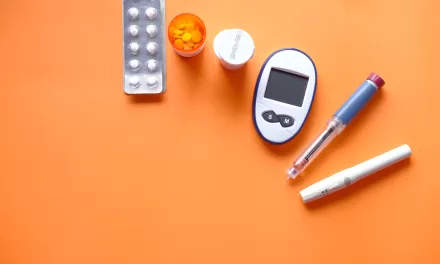Early detection of oral cancers and precancerous lesions has long been a challenge due to the invasive nature of biopsies and the associated costs and complications. However, a groundbreaking study led by a team of researchers from Case Western Reserve University School of Dental Medicine has unveiled a noninvasive and cost-effective test for detecting oral cancer, monitoring precancerous lesions, and determining the necessity of a biopsy.
Published online in the journal Cell Reports Medicine on March 4, the study introduces a novel scoring system based on the levels of two proteins in cells brushed from suspicious oral lesions of patients at dental clinics or the ear, nose, and throat department at University Hospitals (UH).
The proteins, known as human beta defensin 3 (hBD-3) and hBD-2, exhibit distinct expression patterns in early-stage oral cancer. While hBD-3 is expressed at high levels, hBD-2 remains low or unchanged. By calculating the ratio of hBD-3 to hBD-2 in the lesion site and comparing it to the opposite, normal site, researchers developed a scoring system called the beta defensin index (BDI). A BDI score above a predetermined threshold indicates cancer, while a score below suggests benign lesions.
“We discovered that hBD-3, initially thought to be beneficial for wound healing and microbial defense, is actually overexpressed in early-stage oral cancer,” explained Aaron Weinberg, the study’s lead researcher and chair of the Department of Biological Sciences at Case Western Reserve School of Dental Medicine. “This led us to explore the potential of the BDI to differentiate between cancerous and benign lesions.”
The study’s findings were independently validated using identical protocols at multiple institutions, including the University of Cincinnati Medical Center and West Virginia University School of Dentistry.
According to Weinberg, the lab-based approach can significantly reduce unnecessary biopsies in primary care clinics by up to 95%, providing clinicians with valuable guidance on who truly requires further evaluation. Moreover, the test holds promise for use in developing countries with limited access to pathology services.
Inspired by the success of the lab-based approach, the researchers are developing a point-of-care (POC) device in collaboration with Umut Gurkan, a professor at the Case School of Engineering. This device would allow for real-time measurement of the protein ratio, providing results within half an hour directly in a clinic setting.
Supported by grants from various organizations, including the National Institute of Dental and Craniofacial Research and the National Cancer Institute, the study represents a significant advancement in the early detection and management of oral cancers and precancerous lesions, offering hope for improved patient outcomes worldwide.












